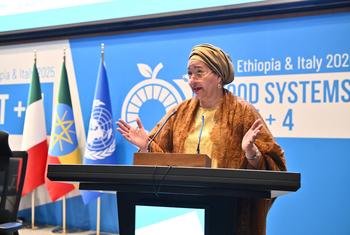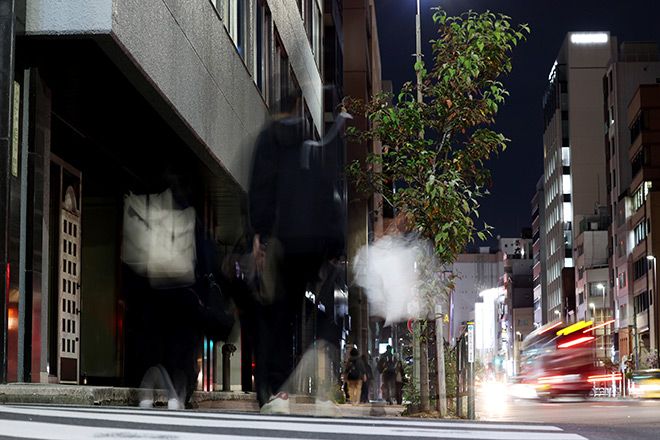‘By women, for women’: 15 years of the UN agency championing gender equality – UN News

Global Setbacks in Achieving Sustainable Development Goal 5: Gender Equality
Current State of Gender Equality and Progress Towards SDG 5
A global regression in women’s rights is jeopardizing the achievement of the Sustainable Development Goals (SDGs), particularly SDG 5 (Gender Equality). One in four countries is reportedly experiencing a backlash against women’s rights. Afghanistan exemplifies this crisis, ranking as the country with the second-largest gender gap globally. The imposition of numerous edicts by de facto authorities has severely restricted the fundamental rights of women and girls, impacting their access to education, public life, and economic opportunities.
This reversal of progress is not isolated. UN Women, on its 15th anniversary, reports that hard-won gains are in peril due to diminishing financial support and a decelerating pace of progress. The agency’s Executive Director, Sima Bahous, has emphasized that this is a critical moment to increase, not decrease, efforts towards gender equality.
Key Challenges Impeding Progress on the 2030 Agenda
Several critical challenges are hindering global progress towards gender equality and related SDGs. These issues highlight systemic failures to protect and empower women and girls.
- Poverty and Economic Inequality: One in ten women and girls lives in extreme poverty, a direct challenge to SDG 1 (No Poverty). At the current rate of progress, eradicating this level of poverty will not be achieved for another 137 years.
- Conflict and Insecurity: The number of women living in or near conflict zones has doubled in the last decade, now exceeding 600 million. This reality severely impacts SDG 16 (Peace, Justice and Strong Institutions) and exposes women to heightened risks of gender-based violence, food insecurity, and malnutrition.
- Underrepresentation in Leadership: Women remain significantly underrepresented in political leadership, undermining SDG 5.5 (Ensure women’s full and effective participation and equal opportunities for leadership). It is projected that gender parity in top governmental leadership roles will not be reached for another 130 years, with 103 countries having never had a female Head of State.
- The Digital Divide: The widening gender digital divide presents a significant barrier to achieving SDG 9 (Industry, Innovation and Infrastructure) and SDG 4 (Quality Education). This gap limits women’s and girls’ access to essential digital tools, education, and future economic opportunities.
UN Women’s Strategic Interventions to Advance the SDGs
Enhancing Women’s Role in Peace and Security (SDG 16)
Evidence indicates that peace processes are more durable when women are included as signatories. Despite this, between 2020 and 2023, 80 percent of peace talks excluded women. To address this gap and advance SDG 16, UN Women supports greater gender inclusion in peace-related activities. A notable example is in Ukraine, where more women are entering the field of demining, a critical role in a country where an estimated 20 percent of land is contaminated with unexploded ordnance. This shift challenges traditional gender norms and integrates women into essential post-conflict recovery efforts.
Promoting Economic Empowerment and Political Participation (SDG 5 & SDG 8)
To advance SDG 5 (Gender Equality) and SDG 8 (Decent Work and Economic Growth), UN Women supports initiatives that foster collective action for women’s economic and political empowerment. In the Pacific, a program launched in 2014 has supported over 50,000 women market vendors. These women, who constitute the majority of vendors but are governed by male-dominated municipal councils, have formed associations to bargain collectively. This has led to significant improvements in their working conditions, including better security and infrastructure, demonstrating how collective action can translate into tangible progress on SDG targets related to economic participation and leadership.
The Path Forward: Addressing Funding Gaps and Maintaining Momentum
Financial Requirements and Call to Action
A significant obstacle to achieving global gender equality is a severe funding shortfall. A $420 billion annual gap in financing for gender equality initiatives makes the work of agencies like UN Women increasingly challenging. Despite these financial constraints, the agency has affirmed its commitment to intensifying its efforts. Achieving the targets outlined in the 2030 Agenda for Sustainable Development requires a renewed and robust financial and political commitment from the international community to empower all women and girls.
Case Study: Resilience in Afghanistan
Despite facing over 80 edicts that curtail their rights, women in Afghanistan demonstrate remarkable resilience. They are forming grassroots organizations to promote women’s leadership and prepare for a future where their fundamental rights are restored. These local efforts underscore the unwavering demand for equality and serve as a powerful reminder of the human stakes involved in achieving the Sustainable Development Goals. Their persistence in the face of extreme adversity highlights the critical need for continued international support for women’s rights everywhere.
Which SDGs are addressed or connected to the issues highlighted in the article?
-
SDG 5: Gender Equality
This is the central theme of the article. It is explicitly mentioned and discussed in detail, focusing on the global backlash against women’s rights, the work of UN Women, restrictions on women in Afghanistan, and the need for women’s participation in all spheres of life.
-
SDG 1: No Poverty
The article directly links gender inequality to poverty by stating, “One in 10 women and girls lives in abject poverty,” highlighting the gendered dimension of poverty.
-
SDG 16: Peace, Justice and Strong Institutions
The article discusses the situation of women in conflict zones, their exclusion from peace processes, and the importance of their participation for durable peace. It mentions that “Over 600 million women and girls live within 50 kilometres of a conflict” and that “peace processes with women signatories are more durable.”
-
SDG 8: Decent Work and Economic Growth
The article addresses women’s economic empowerment through the example of market vendors in the Pacific. It describes how women, who “make up the majority of vendors at markets,” formed associations to address poor working conditions and gain economic power.
-
SDG 4: Quality Education
While not the main focus, the article alludes to this goal by mentioning “previous hard-won gains in accessible education for girls” are in peril and that authorities in Afghanistan have “restricted women and girls’ fundamental rights,” which includes the right to education.
What specific targets under those SDGs can be identified based on the article’s content?
SDG 5: Gender Equality
-
Target 5.1: End all forms of discrimination against all women and girls everywhere.
The article highlights this target by discussing the “80 edicts that curtail women and girls’ fundamental rights” in Afghanistan, which are a clear form of legal and social discrimination.
-
Target 5.5: Ensure women’s full and effective participation and equal opportunities for leadership in all levels of decision-making in political, economic and public life.
This target is identified through multiple examples: the fact that “103 countries have never had a female Head of State,” the exclusion of women from peace talks, and the successful efforts of women market vendors in the Pacific to form associations for collective bargaining.
-
Target 5.c: Adopt and strengthen sound policies and enforceable legislation for the promotion of gender equality and the empowerment of all women and girls at all levels.
The article implies the need for this target by pointing out the lack of gender parity in government, the benefits of quotas, and the “backlash against women’s rights” in one in four countries, suggesting a need for stronger policies and legislation.
SDG 1: No Poverty
-
Target 1.2: By 2030, reduce at least by half the proportion of men, women and children of all ages living in poverty in all its dimensions according to national definitions.
The article directly relates to this target by stating, “One in 10 women and girls lives in abject poverty,” focusing on the specific vulnerability of women and girls to poverty.
SDG 16: Peace, Justice and Strong Institutions
-
Target 16.7: Ensure responsive, inclusive, participatory and representative decision-making at all levels.
This is addressed by the statistic that “between 2020 and 2023, 80 per cent of peace talks did not include women,” showing a lack of inclusive decision-making in peace processes.
-
Target 16.1: Significantly reduce all forms of violence and related death rates everywhere.
The article connects to this target by noting that the doubling of women living in conflict zones in the past decade puts them at “greater risk of gender-based violence.”
SDG 8: Decent Work and Economic Growth
-
Target 8.8: Protect labour rights and promote safe and secure working environments for all workers.
The example of women market vendors in the Pacific highlights this target. Their initial concerns included “poor ventilation, security concerns and refrigeration infrastructure,” which are issues of unsafe working environments. Their collective action led to improvements.
SDG 4: Quality Education
-
Target 4.5: By 2030, eliminate gender disparities in education and ensure equal access to all levels of education and vocational training for the vulnerable.
This target is implied by the reference to Afghanistan having the “second largest gender gap in the world” and the mention of edicts that curtail girls’ rights, which includes access to education.
Are there any indicators mentioned or implied in the article that can be used to measure progress towards the identified targets?
SDG 5: Gender Equality
- Indicator for Target 5.1: The existence and number of discriminatory laws and regulations, such as the “80 edicts that curtail women and girls’ fundamental rights” in Afghanistan.
- Indicator for Target 5.5: The proportion of women in leadership positions. The article provides several negative indicators: “103 countries have never had a female Head of State” and the projection that “gender parity in top governmental leadership will not be achieved for another 130 years.” Another indicator is the proportion of women in peace negotiations, where “80 per cent of peace talks did not include women.”
SDG 1: No Poverty
- Indicator for Target 1.2: The proportion of the population living in poverty, disaggregated by sex. The article provides the specific statistic: “One in 10 women and girls lives in abject poverty.”
SDG 16: Peace, Justice and Strong Institutions
- Indicator for Target 16.7: Proportions of positions in public institutions held by women. The statistic that “80 per cent of peace talks did not include women” serves as a direct indicator for the lack of inclusion in peace-building institutions.
- Indicator for Target 16.1: The number of people, specifically women and girls, living in conflict-affected areas. The article states, “Over 600 million women and girls live within 50 kilometres of a conflict.”
SDG 8: Decent Work and Economic Growth
- Indicator for Target 8.8: The article implies qualitative indicators related to working conditions, such as the initial problems of “poor ventilation, security concerns and refrigeration infrastructure” for market vendors. The formation of associations by “over 50,000 women vendors” is an indicator of worker organization to improve these conditions.
SDG 4: Quality Education
- Indicator for Target 4.5: A gender parity index. The article mentions that Afghanistan has the “second largest gender gap in the world,” which is a direct reference to such an index measuring disparities between genders in areas like education.
Table of SDGs, Targets, and Indicators
| SDGs | Targets | Indicators |
|---|---|---|
| SDG 5: Gender Equality |
5.1: End all forms of discrimination.
5.5: Ensure women’s full participation and equal opportunities for leadership. |
Number of discriminatory laws/edicts (e.g., “80 edicts” in Afghanistan).
Proportion of women in leadership (e.g., “103 countries have never had a female Head of State”). |
| SDG 1: No Poverty | 1.2: Reduce poverty in all its dimensions. | Proportion of women and girls living in poverty (e.g., “One in 10 women and girls lives in abject poverty”). |
| SDG 16: Peace, Justice and Strong Institutions |
16.1: Reduce all forms of violence.
16.7: Ensure responsive, inclusive, participatory and representative decision-making. |
Number of women living in conflict zones (e.g., “Over 600 million women and girls live within 50 kilometres of a conflict”).
Proportion of women in decision-making bodies (e.g., low inclusion in peace talks). |
| SDG 8: Decent Work and Economic Growth | 8.8: Protect labour rights and promote safe and secure working environments. | Qualitative measures of working conditions (e.g., “poor ventilation, security concerns”). Number of women in worker associations (e.g., “over 50,000 women vendors have formed associations”). |
| SDG 4: Quality Education | 4.5: Eliminate gender disparities in education. | Gender gap/parity index (e.g., Afghanistan has the “second largest gender gap in the world”). |
Source: news.un.org

What is Your Reaction?
 Like
0
Like
0
 Dislike
0
Dislike
0
 Love
0
Love
0
 Funny
0
Funny
0
 Angry
0
Angry
0
 Sad
0
Sad
0
 Wow
0
Wow
0














































































